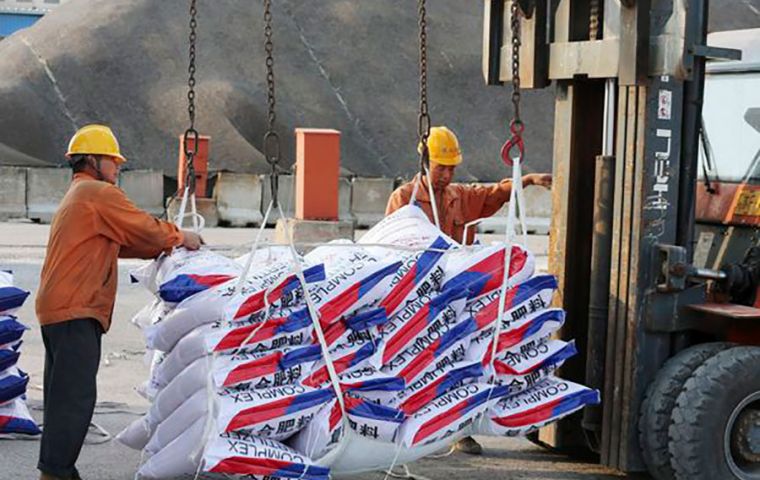MercoPress. South Atlantic News Agency
Brazil continues to receive Russian fertilizers although in erratic shipments
 Russia supplied 22% of the 39 million tons of fertilizers imported by Brazil during 2021
Russia supplied 22% of the 39 million tons of fertilizers imported by Brazil during 2021 Some 600,000 tons of fertilizer, 50% of which potash and of Russian origin were on their way to Brazil during the first week of April. Despite almost two months of war, the flow of Russian fertilizer to Brazil continues, according to consultancy StoneX.
The volume is considered significant, although it is less than a few days earlier. On March 18, the ships’ calling schedule showed 860,000 tons of fertilizers from Russia were heading for Brazil, a reduction that indicates interruptions in the transport flow.
“If vessels at the Russian end had been loaded normally, the volume would, at last, be kept the same, but actually contracted,” comments Marcelo Mello, director of fertilizers at StoneX.
The economic sanctions the West imposed on Russia after the country invaded Ukraine in February do not ban the import of Russian fertilizer. Still, the conflict is causing headaches on at least two fronts, payments, and logistics. Russia is one of the largest global fertilizer suppliers.
Between March 20 and April 13, six vessels loaded with fertilizers docked at the Port of Santos. The Paranaguá terminal, the port that received the most fertilizers in Brazil, received another four vessels in the period, totaling over 100 thousand tons of soil nutrients from Russia, including potash, urea, and MAP.
Because of the war, the flow of maritime transportation is under the watch of agents who expect a mid-year logistical bottleneck, common at that time of the year, but expected to worsen in 2022.
Mello says attention is now turned to shipments in March and April when Brazil intensifies imports to meet the demand for planting the summer crop (2022/23), which begins in September. Despite the challenging scenario in 2022, Mello believes that the problem will not derail the next harvest – which, if the weather helps, should be “big”. “But it is difficult for the planted area to increase in the next cycle”, he says.
Russia supplied 22% of the 39 million tons of fertilizers that Brazil imported last year, in a list that has urea (nitrogen), MAP (phosphate), ammonium and potassium nitrate. For the latter two, StoneX projects shortages in 2022.
Ammonium nitrate can be substituted for urea, but farmers have no other option for potash. “The situation can be neutralized if the use of fertilizers is rationalized,” anticipated Mello. Nevertheless the consultancy believes that the supply of potash will be between 25% and 30% below demand.




Top Comments
Disclaimer & comment rulesCommenting for this story is now closed.
If you have a Facebook account, become a fan and comment on our Facebook Page!